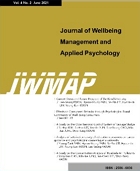 E-ISSN : 2586-6036
E-ISSN : 2586-6036
Vol.3 No.3
Abstract
Human resource management has always been the most important part of any organization (corporate and government-owned). Until whenever improvement in human resource management is always the background of every problem that occurs in the organization. This study aims to examine the relationship of procedural justice and organizational commitment to OCB satisfaction and job satisfaction in the Public Works Office of Kutai Kartanegara Regency. Sampling involved the entire population, i.e. 109 informants. They are employees who have goods and services certificates. Hypothesis test carried out with the SEM-PLS model in two stages (outer model and inner model). After that, the survey data was used SMART PLS 3.0. Based on empirical findings, we find that procedural justice has a positive and significant effect on OCB, while organizational commitment does not. Procedural justice, organizational commitment, and OCB have had a positive and significant effect on job satisfaction. The novelty of the study lies in the originality value that describes the conditions in a government agency with different benchmarks (variables and indicators) from previous studies, so it is very interesting and varied.
Abstract
Consumers exposed to aesthetic brands can not only experience sensory pleasure but also lead to strong customer loyalty. Furthermore, aesthetic brands can expect to lead to the overall experience of the brand. They include the brand's sensory, emotional, behavioral and intellectual experience. Since aesthetic brands related to the sensory representation of customers, consumers exposed to aesthetic brands can expect to have a meaningful impact on the overall experience of the brand. The study will select aesthetic brands that distributed in Korea and then compare the aesthetic characteristics of each brand. It also seeks to verify the brand attractiveness, consistency, prominence and influence of brand motifs on the brand's sensual, emotional, behavioral and intellectual experience. To verify the influence between variables proposed in this study, we would like to conduct a multiple regression analysis. SAS 9.4 used to verify the hypotheses proposed in this study. Cronbach's α measure to verify reliability of each measurement item. In particular, brand attractiveness and brand motif can verify empirically to confirm that they play an important role in inducing brand experience.
Abstract
Indonesia is currently intensifying its level of awareness of the importance of starting a business as an entrepreneur. How to respond to technological developments to help support the growth of a start-up entrepreneur. Usually before buying a product, customers always think of many factors that can influence their buying decisions in online shopping. The two factors that most influencing are, Discounts and Promotions, which can greatly determine people's purchase intention, before finally buying the product. The researcher begin research with the aim to understand whether these 2 factors are factors that really affect someone's buying interest before doing online shopping. For this study, information and data collected by the survey by using means of questionnaires. And it standard measurements using a 5-point Likert scale, and processed by IBM SPSS Statistics 25 program. In this study, it has been found that indeed these two factors, Discounts and Promotions, are both influential in encouraging someone's purchase intention in conducting online shopping transactions. We found that both factors are significant and influence each other. The results of this study expected to help broaden the horizons of buyers and sellers about the benefits of discounts and promotions in online shopping.













